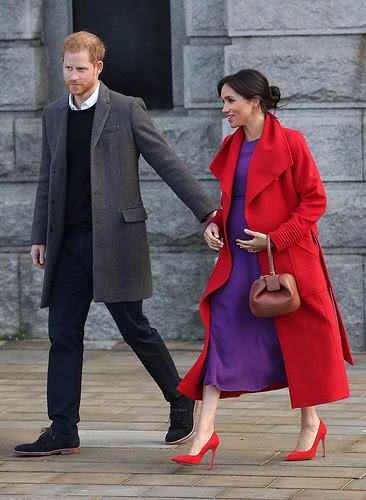
By Shyamal Sinha

Meditation is a conscious effort to change how the mind works. The Pali word for meditation is ‘bhavana’ which means ‘to make grow’ or ‘to develop’
Meeting wellwishers during a royal visit to Birkenhead in Merseyside, England, on 14 January, Britain’s Prince Harry reportedly shared with 69-year-old Buddhist monk Kelsang Sonam that he meditates every day. Following their conversation, Kelsang Sonam presented the prince a copy of the book Eight Steps to Happiness: The Buddhist Way of Loving Kindness by the Tibetan Dharma teacher Kelsang Gyatso.
Prince Harry and his wife, American former actress and humanitarian Meghan Markle, visited a community café and supermarket called Number 7 selling discounted food for low-income families, operated by Feeding Birkenhead, a coalition of organisations “working together to eliminate hunger” in the local community. During the visit, the couple had the chance to sit with some of the organization’s staff and customers, which is when the prince and Kelsang Sonam spoke.
The Daily Mail tabloid’s correspondent Rebecca English tweeted about their conversion: “Random fact of the day: a 69-year-old Buddhist monk named Kelsang Sonam, who gave Harry a copy of a book titled “Eight Steps to Happiness,” said the prince told him he meditates every day.” (Rebecca English Twitter)

Markle might have introduced her husband to meditation. Prior to marrying the prince, Markle practice meditation daily and the practice continued as she made the transition to royal life. Years before her royal engagement, Light Watkins, an American meditation teacher, taught her the mindfulness practice, which she quickly adopted into her wellbeing routine.
“I met Meghan through a mutual friend of ours about five years ago,” Light Watkins told women’s fashion magazine InStyle. “This friend of ours is in the wellness space and I think she had been working on some diet stuff with him. She’d been obviously familiar with the practice [of meditation] and had been doing it on her own and she was really intrigued by the fact that I was a meditation teacher and I do these trainings.”
Cosmopolitan reports that Markle has also influenced her husband’s diet, which now includes eating chia seeds.
Markle wrote about her experience with meditation in a 2015 post on her former lifestyle blog The Tig: “Last week marked the one-year anniversary of my relationship with meditation, something I found endlessly daunting at first (the thoughts, the distractions, the boredom of it), but soon became the quietude that rocked my world.” (The Tig)
“I can’t put my finger on the why or the how, but I will tell you this much, for me . . . I am just happier. And meditation has much to do with that . . . I urge you to give it a shot. The worst thing that can happen is that you gave yourself 10 minutes of quiet in an endlessly loud world. Shhhhh . . . it feels good.” (The Tig)
The Buddha taught many different types of meditation, each designed to overcome a particular problem or to develop a particular psychological state. But the two most common and useful types of meditation are Mindfulness of Breathing (anapana sati) and Loving Kindness Meditation (metta bhavana).
Markle, and reportedly Prince Harry, practice mindfulness meditation, an ancient technique found in many contemplative spiritual traditions, including Buddhism. Mindfulness meditation has been rapidly growing in popularity among modern physiologists, neurologists, and physicians, and many recent studies demonstrate that even secular versions of the practice offer numerous well-being benefits, such as stress reduction, deep relaxation, and more positive states of mind.
The four Ps place, posture, practice and problems. First, find a suitable place, perhaps a room that is not too noisy and where you are not likely to do disturbed. Second, sit in a comfortable posture. A good posture is to sit with your legs folded, a pillow under your buttocks, your back straight, the hands nestled in the lap and the eyes closed. Alternatively, you can sit in a chair as long as you keep your back straight. Next comes the actual practice itself. As you sit quietly with your eyes closed you focus your attention on the in and out movement of the breath. This can be done by counting the breaths or watching the rise and fall of the abdomen. When this is done, certain problems and difficulties will arise. You might experience irritating itches on the body or discomfort in the knees. If this happens, try to keep the body relaxed without moving and keep focusing on the breath .It is good to do meditation for 15 minutes every day for a week and then extend the time by 5 minutes each week until you are meditating for 45 minutes. After a few weeks of regular daily meditation you will start to notice that your concentration gets better, there are less thoughts, and you have moments of real peace and stillness











